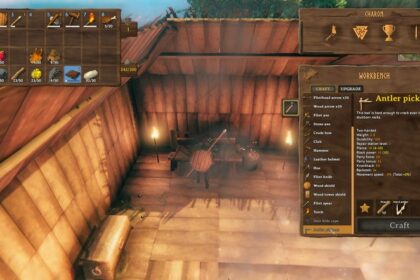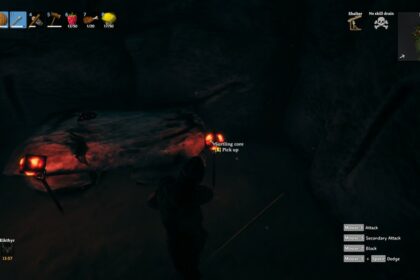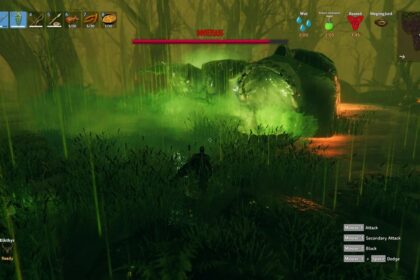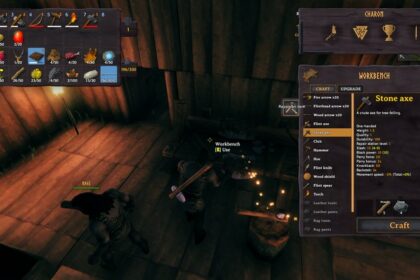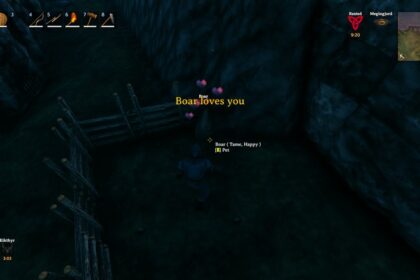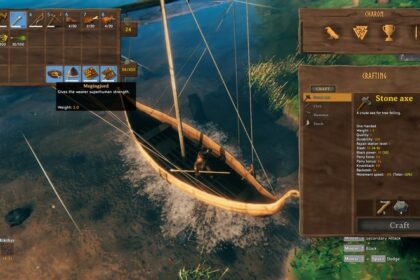Sailing is an important aspect of Valheim. Not all the resources you need are available in your starter island and surrounding islands, so you will be sailing at least 20% of the time in ordet to progress. This guide will show you how to sail in Valheim and will also break down each ship that’s available and how to unlock them.
To get started sailing in one of Steam’s best indie games, read on and let’s get to the water.
Kinds of Ships
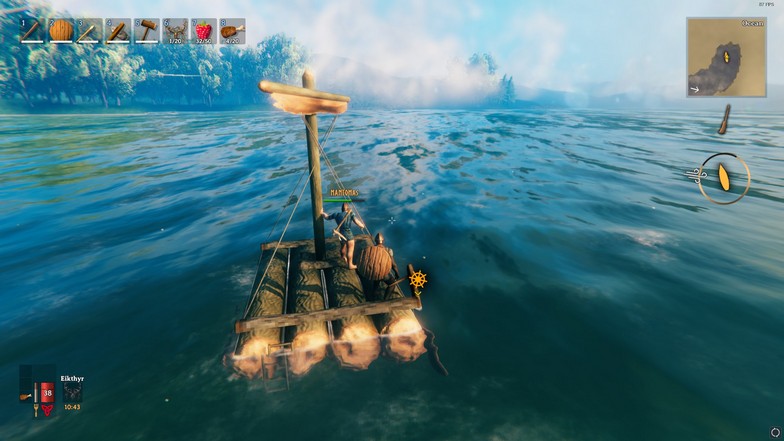
There are 3 kinds of ships in Valheim. The basic raft, the Karve, and a longship. The raft is the easiest and earliest one you can make that can sail. It only requires 20 pieces of wood, 6 leather scraps, and 6 resins to craft and these will also be your emergency ships.
Farming materials for the raft
Wood can be farmed through any kind of tree or bush and it also drops from creatures like Greydwarves. Leather scraps can be farmed from boars especially if you have a boar farm that requires taming. Resin can be farmed through killing Greydwarves which you should have an ample amount of.
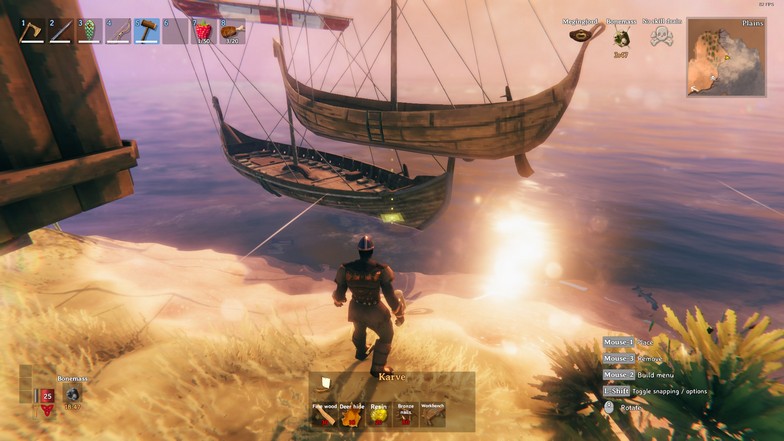
The Karve is a medium-sized ship in Valheim. It is the fastest and the easiest ship to sail with. It is a lot sturdier than the raft and it has a storage container that can hold 4 item slots with an unlimited weight capacity as long as they fit. To build the Karve, it requires 30 fine wood, 10 deer hides, 20 resins, and 80 bronze nails.
Farming materials to craft the Karve
Fine wood can only be farmed by chopping down oak and birch trees with at least a copper tier axe. They can be found in the meadows and plains. Deer hides can be farmed from deer by shooting them with arrows or sneaking behind them. Resins can be farmed from Greydwarves and bronze nails are crafted using bronze bars which are made by using smelted copper and tin ores.
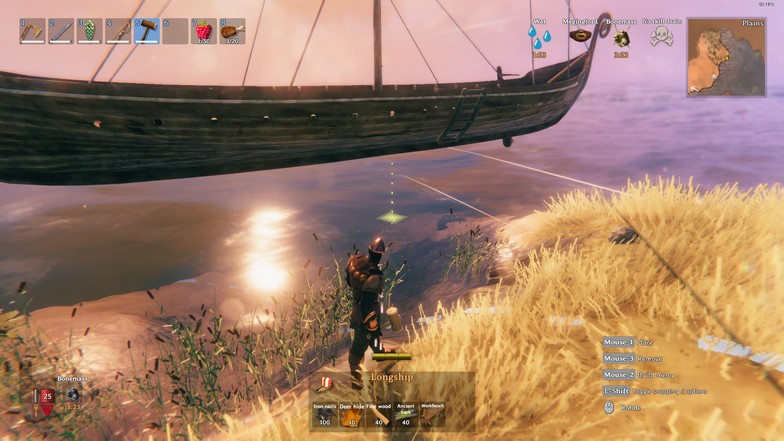
The next ship will be the longship. It boasts a 16-slot storage container with unlimited weight capacity. It has room for about 5 players (10 players could fit but it would be extremely crowded) and it is also the sturdiest ship in Valheim. It is the hardest ship to maneuver if you are against the wind and it is also quite fast for an extremely large ship. To craft the longship, you need 100 iron nails, 10 deer hides, 40 fine wood, and 40 ancient barks.
Farming materials to craft the longship
Fine wood can only be farmed by chopping down oak and birch trees with at least a copper tier axe. They can be found in the meadows and plains. Deer hides can be farmed from deer by shooting them with arrows or sneaking behind them.
Iron nails can be farmed inside crypts by mining the muddy scrap piles which give you scrap iron. Smelt these to turn them into iron bars which can be used to craft iron nails. Ancient bark can be also farmed inside crypts by looking inside chests. They usually drop in bulk. The other method is to chop down ancient trees in the swamp biome.
Each Ship and Their Uses
Raft
Like previously mentioned, this is the earliest one you can craft to sail the ocean. When you unlock the other ships, you will be using the raft as an emergency ship. This is when you either die in the middle of the ocean because of a serpent and you need to grab your items back.
Karve
This is probably the main ship you will use for traveling. This is the easiest ship to maneuver with and it is also the fastest. It only holds 4 storage slots but it works best if you only put materials in that can create portals to establish bases and outposts faster. The 4 storage slots are perfect for holding the materials needed for portals such as 1 stack of Surtling Cores, 2 stacks of fine wood, and 1 stack of Greydwarf Eyes.
Longship
Best used for farming serpents and transferring ores from one island to another. With the amount of space you have in the longship, it makes it easier to have multiple players shoot the serpent with the bow. It is also fast enough to dodge the serpent’s attacks if you are directly with the wind.
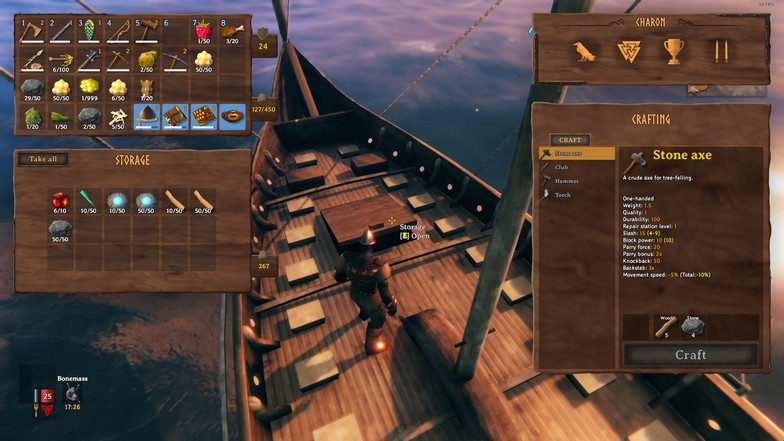
The 16-storage slot container is the most useful feature of the longship. You can transfer at least 16 stacks of ores in one voyage. It is best to fill it up first before going back and forth to have maximum efficiency.
How to Sail
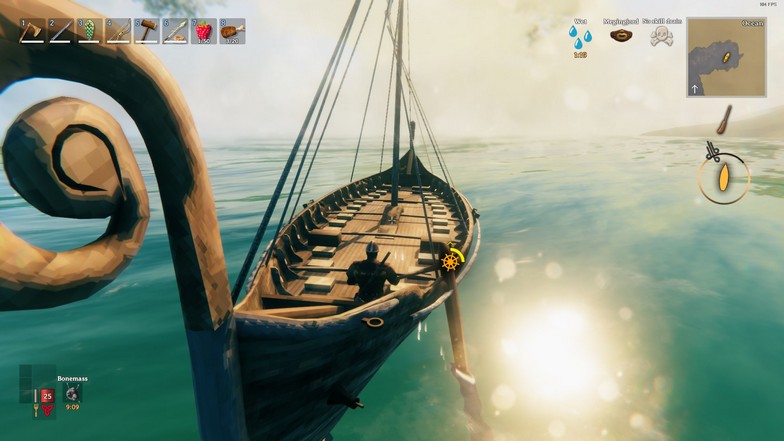
Sailing can be complicated because the wind’s direction is constantly changing. This also emphasizes how great the physics work in Valheim and the degree of the developer’s attention-to-detail. For sailing, you need to control the rudder and press “W” to go forward and “S” to reverse. You will see up to 3 arrows with varying degrees when you use “W” while there is only 1 arrow for reverse when you use “S”.
Sailing with 3 arrows forward means that the sail is fully down and the ship will heavily rely on the wind for speed. The same goes for 2 arrows but with less speed which can be handy if you are in the middle of the ocean inside a thunderstorm. The waves can damage your ship and sometimes it is best to slow it down and let the waves do the work first.
If you go 1 arrow forward, this will move the ship forward slowly and the sail is not being used but instead, the ship is using the paddle to move forward. This means that your ship will not be directly affected by the wind. The same goes for reversing with 1 arrow downward.
“A” and “D” are used to turn the ship and you can check the ship wheel’s icon to know the degree of your turns.
Advanced Tips and Tricks – Sailing
To quickly turn or make a u-turn, you need to go 1 arrow forward and instantly turn the rudder either left or right to as far as you can. Depending on the ship’s current momentum, this will turn the ship extremely fast if the ship is also with high momentum.
If you are going to a specific location and you are going against the wind, it is better to just go straight against the wind and use the paddle (1 arrow forward) instead of zigzagging your ship to go with the wind. The only problem here is that if you encounter a serpent, you will get hit if you are not with the wind with 3 arrows forward.
It is best to stay near a shore to avoid being attacked by serpents.
Always bring wood to make an emergency workbench so you can repair your ship. Just go park at a random shore and make a workbench with your hammer and repair the ship.
If you are trying to get your ship out the shore with no momentum (parked), find the wind’s direction to follow it and either go 1 arrow forward or backward and do a max turn to get out quicker.
If you are being attacked by a serpent and have no choice but to die, jump outside the ship before it gets destroyed and die to the serpent. The serpent will continue to stay in that spot where you died and it will not destroy the ship you abandoned until you show up again near the vicinity.
Use an emergency raft and go to your body with the serpent waiting. Lure the serpent as far as you can without looting your body first and just die again before letting your raft get destroyed. This will be the sacrificial raft run and if you go build another raft to get your items and the abandoned ship, the serpent will not be there but instead, stay near the raft you lured it to.
Conclusion
Sailing takes up hours of your time with knowing it and hopefully, this guide helped you lessen those sailing hours to a minimum. Each ship is unique and has their own uses from the early game up until the endgame. It really depends on how many resources you can spare but it is best to be efficient.

